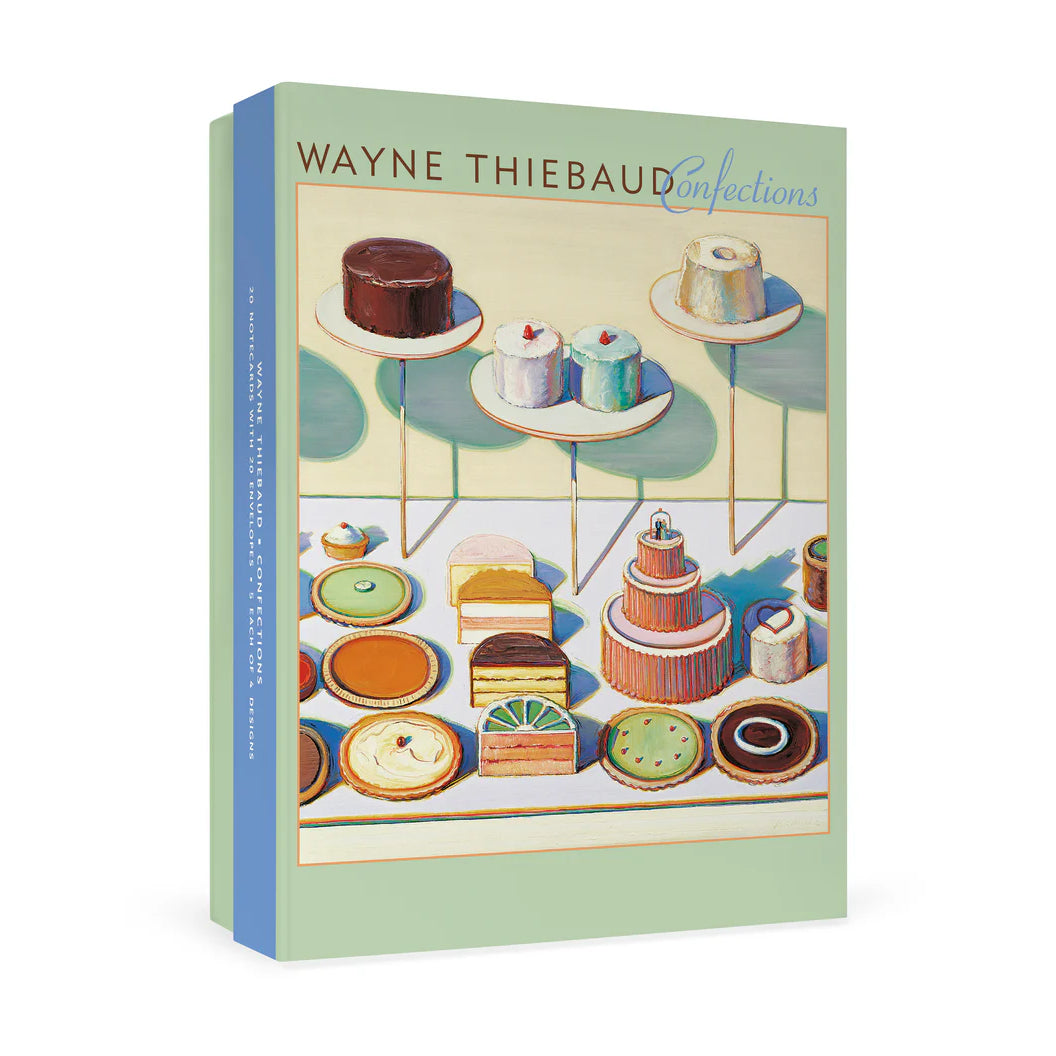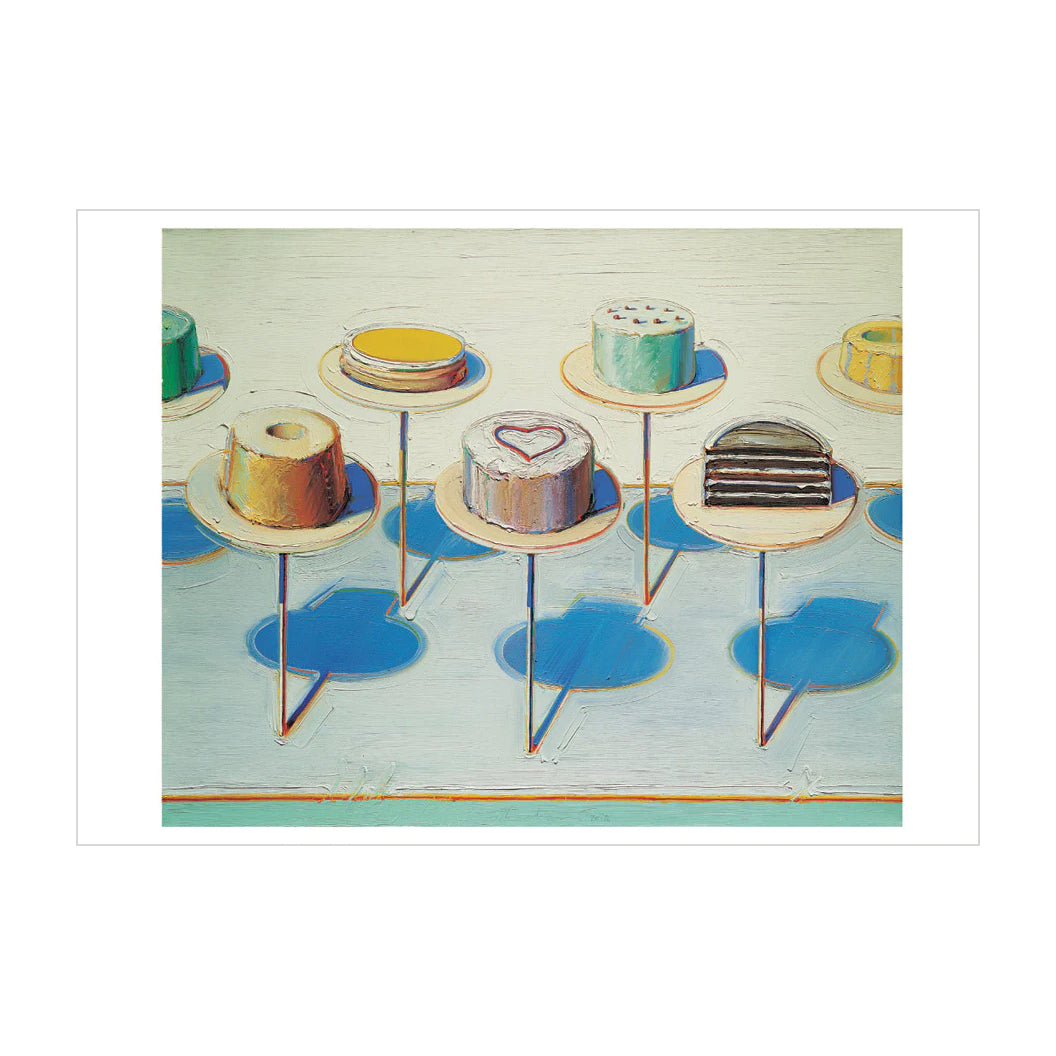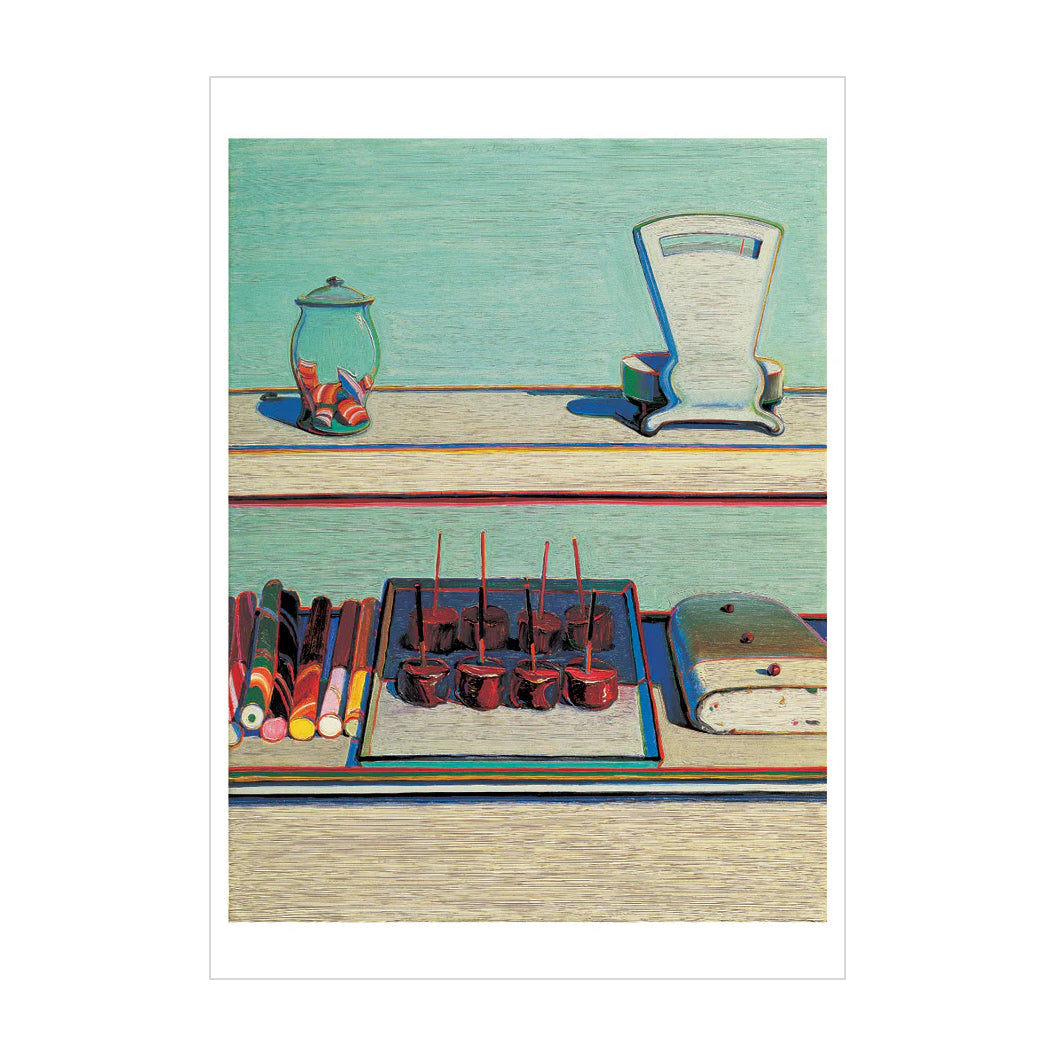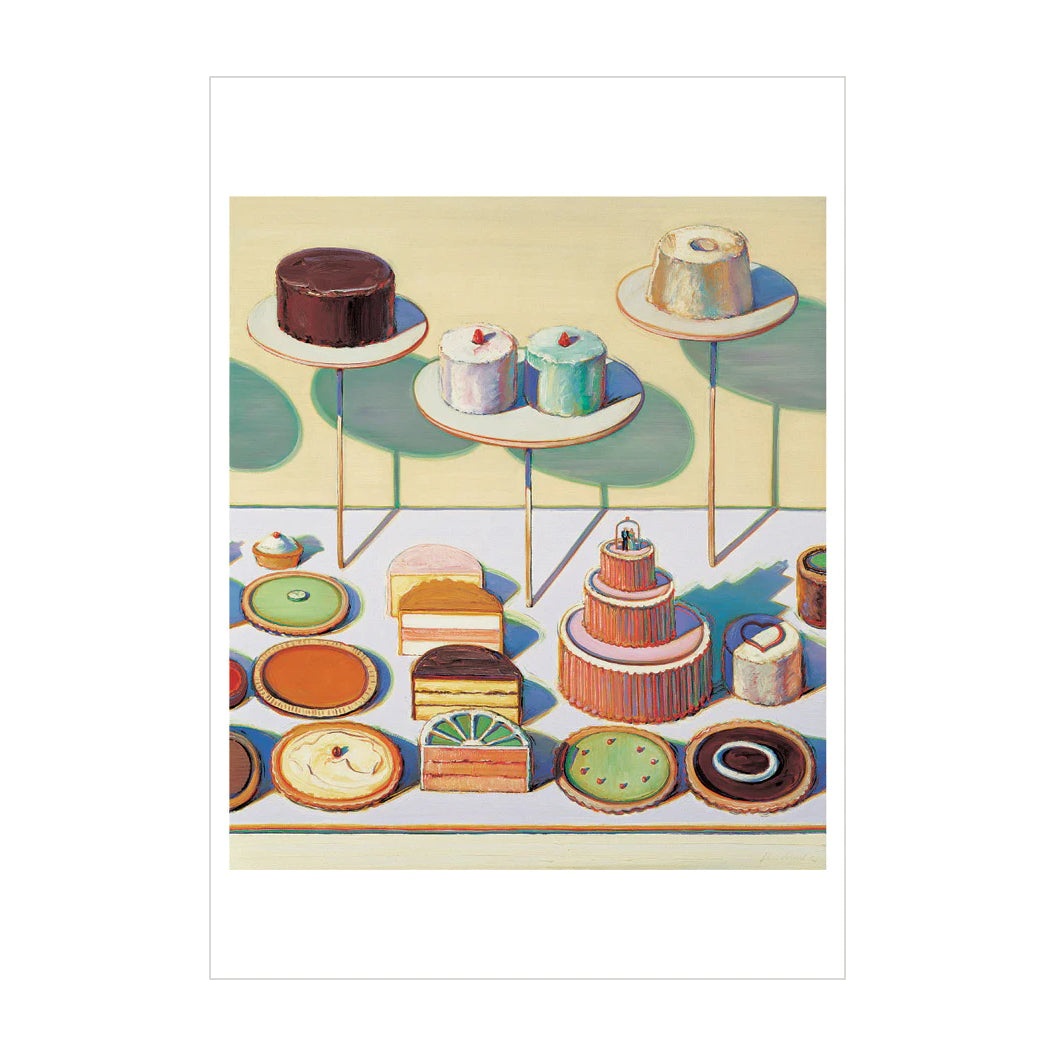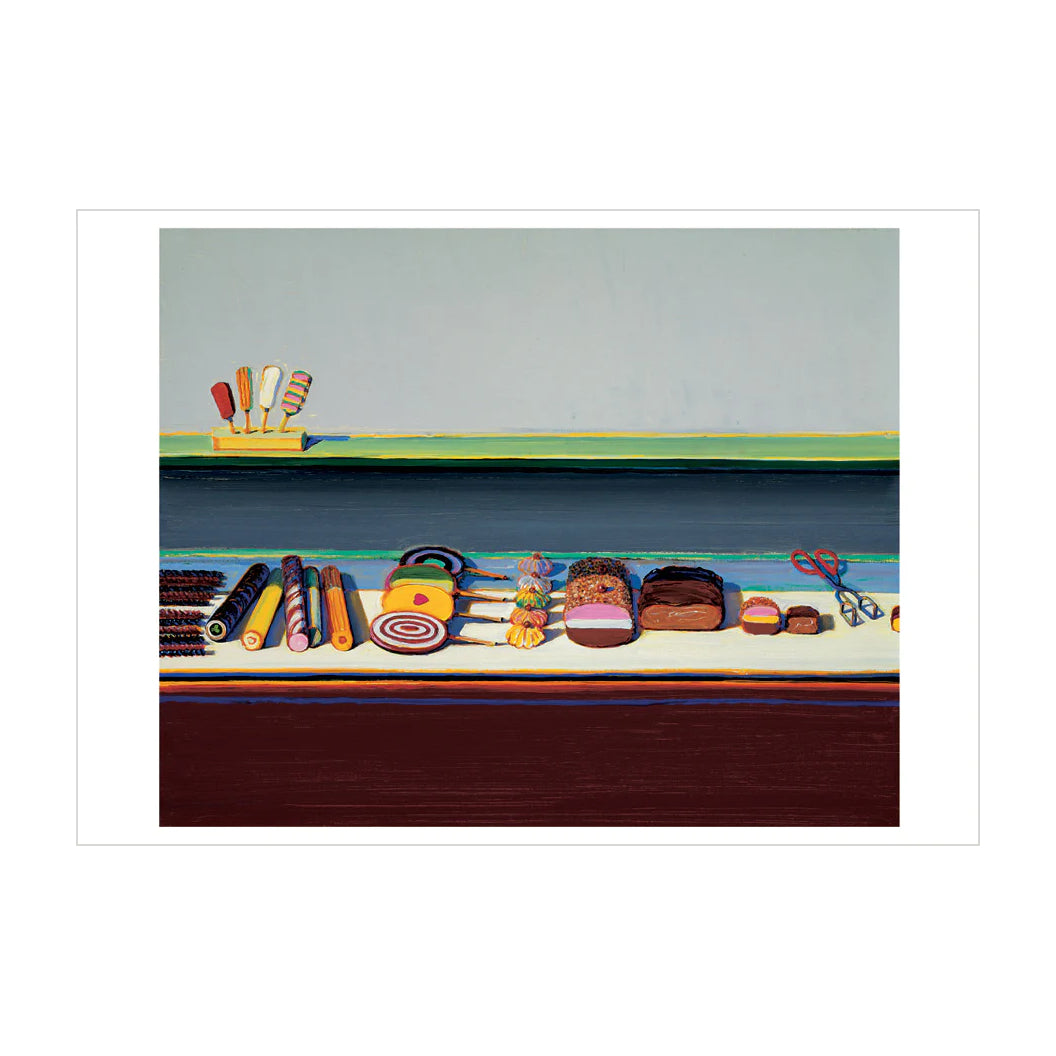Wayne Thiebaud: Confections Boxed Notecard Assortment
Wayne Thiebaud: Confections Boxed Notecard Assortment
Couldn't load pickup availability
Instantly recognizable for their sensuous texture and warm, luminous palette, Wayne Thiebaud’s images of cakes, pies, and other ubiquitous store-bought foods brought him to international prominence in the 1960s. His food paintings explore society’s fascination with, and ritualistic treatment of, certain culinary items; Thiebaud paints what he has called the “tattletale signs” of our culture. Thiebaud’s formidable talents run to a wide range of other subjects, including figure studies, “aerial” landscapes, and eerily vertiginous cityscapes, but the images selected for reproduction in this notecard set concentrate on his skewed, good-humored, pensive take on the sweet stuff. Contains five each of the following notecards: Cake Window (Seven Cakes), 1970–1976 Candy Counter, 1969 Cakes and Pies, 1995 Suckers and Sweets, 2000
DETAILS
• Printed in full color on recycled paper with soy based inks
• High-quality 250 gsm card stock
• Soft white envelopes
• Pomegranate’s notecard sets feature exclusive selections of art from museums and artists around the world
Box size: 5.375 x 7.375 x 1.5 in.
Card size: 5 x 7 in.
Wayne Thiebaud
Arresting and appetizing, Wayne Thiebaud’s signature paintings of cakes and pies inspire the visceral memory of buttercream frosting. One critic said, “You don’t just want to look at his pictures, you want to lick them.” Now one of America’s most critically acclaimed artists, Thiebaud (American, b. 1920) has long been affiliated with Pop Art, though his body of work is far more expansive. In his Northern California studio and across the decades, Thiebaud has explored various details of 100 years of American life through his luminous, richly textured art—from farm country landscapes and “aerial” cityscapes to figure studies and still lifes of shop windows—all the while continuing to explore the food subjects that brought him international fame.
Share
